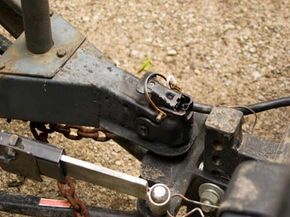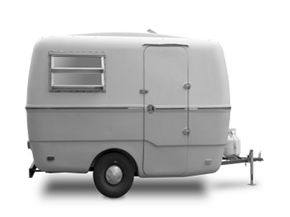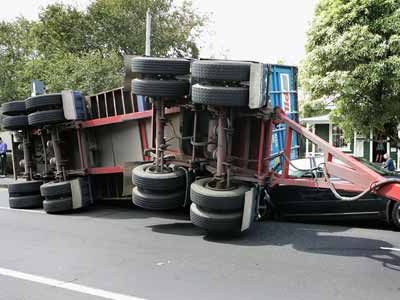Sure, cars, trucks and SUVs work great for ferrying you and yours from Points A to B. But in a society that's grown fond of acquiring and using lots of stuff -- and schlepping it around with us -- our vehicles alone aren't always fully up to the task.
Thank goodness we have trailers to help haul some of the bigger stuff. They come in handy, for instance, when you and a chum want to take a couple of dirt bikes to test your mettle on a hidden trail. A trailer is an absolute necessity when you want to get a boat from your driveway to the launch down by the local fishing hole. For all their functionality, though, trailers come with a host of logistical questions: What's the best way to hook them up? Can my car, truck, or van handle this towing job? Do I have all the hitch accessories I need? As a responsible driver and trailer owner, you must resolve these questions before you can safely and legally hit the open road with your toys and other stuff in tow.
Advertisement
Fortunately, learning how to properly select and use towing equipment isn't rocket science. This article deals with what to do when the receiver hitch of your vehicle comes up short (or tall) compared to the tow apparatus of the trailer you're using. And yes, we'll define and explain all of the common names for the towing set-up parts that you'll need. The hitch accessory you'll be most concerned with to get your vehicle's towing gear matched in height to the trailer, is the drop hitch receiver.
Drop hitch receivers have one purpose -- to alter the height of the trailer hitch receiver. If you have one, it would be the square, steel tube that's bolted to the rear underside of your vehicle. A drop hitch receiver allows you to connect a trailer without fear of it unbalancing the vehicle and possibly causing you to lose control.
You may have seen vehicles laden with a trailer and the vehicle's rear sagging like an overloaded mule with the weight. This is a potentially hazardous situation, since that "sag" shifts weight away from the front wheels and weakens your steering efforts. Having the right hitch accessories can reduce or eliminate this problem by leveling the trailer and evenly distributing its weight.
Drop hitch receivers fit into a standard receiver hitch opening and can add 2 inches to more than 10 inches of vertical space with which to evenly connect a trailer. If your vehicle has four wheels, chances are that some manufacturer has made towing equipment that fits it. In the next section, we'll examine how to choose a drop hitch receiver.
Advertisement



